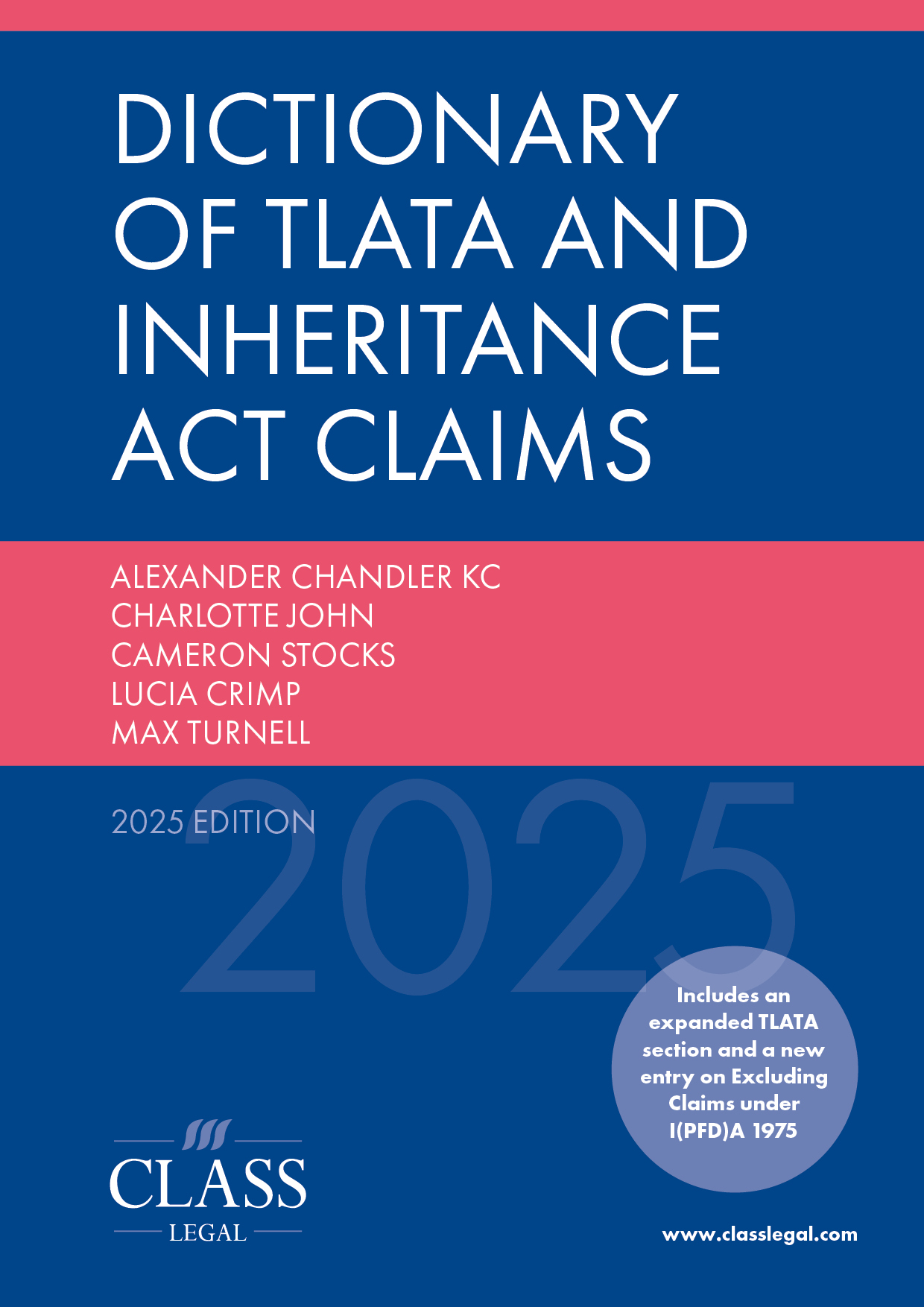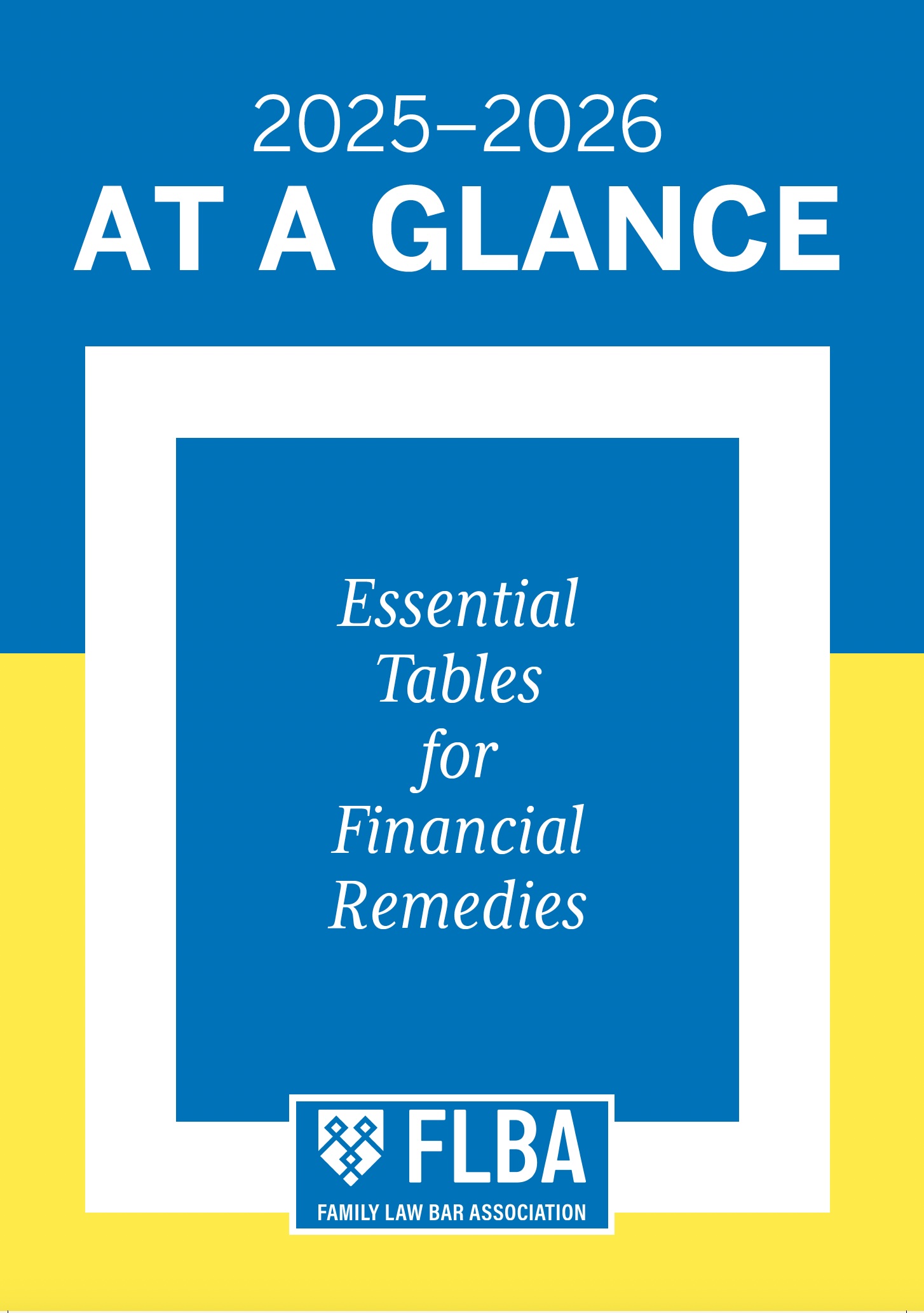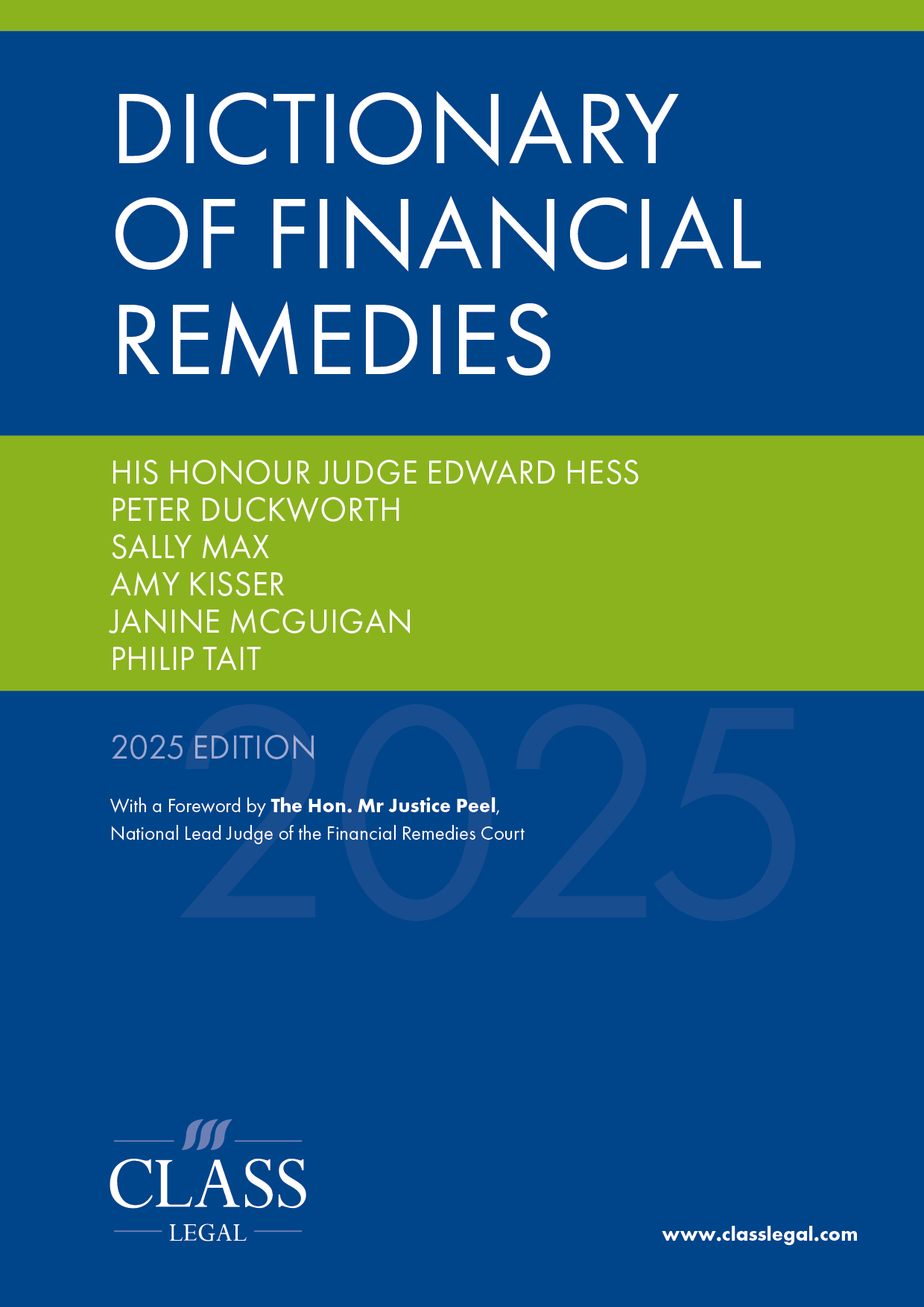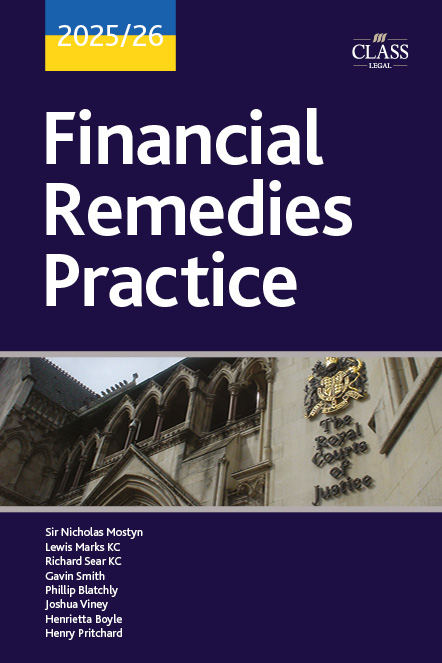
Chattels: What If They Are Not to Be Divided by Agreement?
Published: 28/04/2025 14:00

Chattels are often in dispute between parties to financial remedy proceedings. However their division is something their lawyers are very happy not to get involved with. Little is more likely to lead to a sigh of relief than the words ‘Chattels – to be divided by agreement’.
But what principles apply if a court (or arbitrator) is tasked with their division?
The jurisdiction that is being exercised is simple enough: it is that under MCA 1973, s 24 to make property adjustment orders as this extends to personal property and chattels.
There is also some guidance as to what the appropriate mechanism to be adopted may be.
In K v K (Financial Relief: Management of Difficult Cases) [2005] 2 FLR 1137 Baron J suggested at [32]–[34] (in the context of a case where the parties had valuable antiques worth c.£330,000) that (i) as a matter of practice, the division of chattels must be accomplished prior to final hearing (with a clear schedule denoting the destination of items); and (ii) if the parties cannot agree, then a Scott schedule must be completed with the items marked as agreed or remaining in dispute. The schedule should set out, in very short form, the reasons why any particular item is sought. A schedule was drawn up at the court’s direction and the parties agreed that they would resolve the issue by each drawing up a list of their favourite items in descending order and then make an alternate choice until their respective lists were exhausted, with items unclaimed to be sold and the proceeds divided. If one party obtained more than a 50% share in terms of value then recompense would be made by a set-off or equalising payment.
Baron J further observed (at [32]) that ‘it is important that all outstanding issues are resolved at (and I emphasise this phraseology) the final hearing … Solicitors must not forget chattels’ and (at [33]):
‘[i]n a case with leading counsel, the task of finalising chattels can, mostly, be delegated to the juniors. But, in the final analysis, it is counsel’s responsibility to ensure that chattels are not forgotten.’
The paucity of the reported guidance, however, is perhaps best demonstrated by the fact that in Rayden & Jackson on Relationship Breakdown, Finances and Children it is K v K (Financial Relief: Management of Difficult Cases) alone that is referred to at [11.718] as giving guidance on dealing with (valuable) chattels.
There is even less authority on how the jurisdiction should be exercised.
In B v B [2013] EWHC 1232 (Fam), a case involving overall wealth of c.£40 million, Coleridge J emphasised proportionality:
‘[54] Although the parties are to be applauded for achieving agreement on many of the major issues and certainly cannot be criticised for the disagreement over the apportionment of the [MB] funds, a mild rebuke is justified over their approach to the lesser assets. The small differences (as a proportion of the pot) in the value of the yacht, the approach to cars, the credit cards etc, etc does not merit the time (and costs) spent on them. As the rules now make clear, proportionality is the name of the game when costs are so high and court time is more and more at a premium. A much more rigorous approach to case management (especially in the field of the employment of experts) is being introduced in other areas of the family justice system to save precious time and money. This type of high value litigation cannot expect to be immune and parties to it can expect to be confronted more and more by a refusal by the court to participate in these disputes over the lesser assets and where in each case the difference is around 1% of the net value of the pot or less. Assets falling in this category should be bundled up together and an overall value for them all agreed. If not the court is itself likely to apply that system in a broad, even rough and ready, way. As Mr Marks QC observes the pursuit of precise accuracy is a spurious and vain endeavour where the figures are in most cases derived from professional valuations and opinion and assets are not being sold anyway.
[55] Paragraph 54 above has been seen and approved by the President.’
Although the division of chattels is not a claim brought under the Law of Property Act 1925, s 188, the breadth of the discretion therein is of note:
‘Where any chattels belong to persons in undivided shares, the persons interested in a moiety (i.e. one of two parts) or upwards may apply to the court for an order for the division of the chattels or any of them, according to a valuation or otherwise and the court may make such order and give any consequential directions as it thinks fit.’
The Editors of Butterworths Family Law Service state as follows:
‘[173]
If a claim in relation to chattels is being pursued, the basis of the claim will have to be set out in the written evidence. Plainly, it will not be sufficient to plead a case along the lines of “I want that chattel because…”, unless the claim is based on the court’s ancillary relief jurisdiction to make financial orders under the MCA 1973 …’
In RK v RK (Financial Resources: Trust Assets) [2013] 1 FLR 329, Moylan J (as he then was), when dealing with a wife’s claim to a painting purchased using part of an inheritance received from the husband’s family, said simply:
‘[89] It is not unusual for chattels which have been purchased during the course of a marriage with funds provided by a relative or by way of inheritance to be divided between the parties as part of a fair division of the former matrimonial home’s chattels …’
The other reported authorities on whether a particular chattel should be taken into account – for example Re C (Divorce: Financial Relief) [2008] 1 FLR 625 per Baron J (an aeroplane valued at £120,000) and Joy v Joy [2015] EWHC 455 (Fam) per Singer J (an application to secure a Bentley motor vehicle so that it might be available to meet financial orders) – do not provide much (if any) general guidance. Likewise G v T [2020] EWHC 1613 (Fam) where Mr Nicholas Cusworth QC (sitting as a deputy High Court judge) at [61](c) excluded contents and artwork from the schedule of assets on the basis that an in specie division could be discussed and arranged as their value was de minimis in the context of the principal areas of dispute between the parties.
Most recently in KFK v DQD [2024] EWFC 78 (B) Recorder Rhys Taylor stated (at [260]) where both parties were contending for the contents of Flatacre that:
‘[t]he overriding objective includes the requirement to allot an appropriate share of the court’s resources to the dispute, whilst taking into account the need to allot resources to other cases. This case has now had its fair share of judicial time.’
He therefore gave the parties 28 days to resolve the division of contents between them with liberty to restore reserved to himself within 35 days. However he continued:
‘[262] I make plain, if returned to me, that I reserve the option of requiring all disputed items to be sold on eBay or the like, with the parties each being free to bid for items or to enjoy a 50/50 division of whatever net sum is produced from the sale.’
What may perhaps be taken from foregoing (in no particular order) is:
- As the court is making a property adjustment order under MCA 1973, s 24(1)(a), it must apply s 25. It is therefore the court’s duty to have regard to all the circumstances of the case giving first consideration to the welfare of any child or children of the family who is under 18. The court must have particular regard to the matters set out in s 25(2).
- The court’s objective is to achieve fairness (White v White [2000] 2 FLR 981 per Lord Nicholls of Birkenhead). It goes without saying that this involves fairness to both parties. There is no place for discrimination between husband and wife.
- The authorities (such as they are) mainly focus on the mechanics of division rather than the principles of division.
- Parties may agree that chattels are to be divided by value and/or number (but may also not so agree).
- Parties may base their claim on little more than ‘I want that chattel because …’ – i.e. no legal/beneficial entitlement needs to be evidenced.
- It is not unusual for chattels purchased during a marriage with non-marital monies to be divided between the parties as part of a fair division.
- From a court’s perspective – where it is required to give effect to the overriding objective (and which includes at r 1.2(b) ‘dealing with the case in ways which are proportionate to the nature, importance and complexity of the issues’; (d) ‘saving expense’; and (e) ‘allotting to it an appropriate share of the court’s resources, while taking into account the need to allot resources to other cases’) – proportionality is key and the court’s approach to division may be a broad and potentially robust/simplistic one.
- The overriding objective does not apply to arbitration proceedings in the same way particularly as parties may choose to arbitrate what they wish at their joint cost (subject to any order for costs that may be made) and r 1.2(e) does not apply in the same way. However, this does not mean that an arbitrator ought not take a proportionate approach to issues such as these not least because Coleridge J’s observation in B v B at [54] that ‘the pursuit of precise accuracy is a spurious and vain endeavour where the figures are in most cases derived from professional valuations and opinion and assets are not being sold anyway’ is of general application.











